When Trekking Gokyo Valley, you will experience peaceful nature, beautiful Sherpa culture, and Himalayan magnificence. In addition, you will also explore the beauty of the glacial lakes at Gokyo valley. The Gokyo Trek in Nepal offers a spectacular journey through remote valleys and alongside stunning glacial lakes, showcasing the majestic beauty of the Himalayas.
Overview
One of the beautiful trekking adventures in the Everest region, Gokyo Lakes Valley Trek takes you to the Gokyo Valley. The valley is the hub of beautiful glacial lakes – Gokyo Lakes – that stand in the spectacular surroundings of the mountains. You can enjoy the magnificence of the mountains and nature throughout the trek and eventually reach the Gokyo valley to explore more wonders. The Gokyo Lakes Valley Trek combines natural beauty with cultural richness, making it a remarkable adventure for those seeking both serenity and challenge. Whether you're drawn by the stunning landscapes, the cultural encounters, or the adventure of trekking at high altitudes, this trek offers an unforgettable experience in the heart of the Himalayas. Trekking to Gokyo Valley in Nepal immerses you in awe-inspiring mountain vistas and the beauty of lakes nestled in the high Himalayas.
Starting from Lukla, the trek leads you through picturesque Sherpa villages, lush forests, and beautiful landscapes, gradually ascending to higher altitudes. The Gokyo Valley trek distance typically covers around 92 kilometers, offering trekkers an exhilarating journey through breathtaking landscapes. The journey is not just about the destination but the incredible experiences along the way. You'll walk alongside the Dudh Koshi River, cross suspension bridges festooned with prayer flags, and enjoy the warm hospitality of the local Sherpa community.
The gokyo trail adventure takes you to the Everest Base Camp up to Namche Bazar and then takes you through a different route. However, you can also trek to the Everest Base Camp via Gokyo valley crossing Cho La. The itinerary of EBC Gokyo Trek combines the iconic Everest Base Camp with the beautiful Gokyo Lakes trek for an unforgettable experience. But this adventure returns from Gokyo valley after exploring its magnificence. As you explore the Everest Gokyo Valley Trek, you can visit the five sacred lakes, each with its unique charm. The tranquility of the area, combined with the grandeur of the surrounding peaks, provides a perfect setting for relaxation and reflection. The trek also offers the opportunity to witness the Ngozumpa Glacier, the largest glacier in Nepal.
What you see during Gokyo Lakes Valley Trek
The entire Trekking Gokyo Valley adventure gives you a beautiful experience to cherish. But the experience of Gokyo Ri trek and Hiking to Gokyo Valley is something unmatchable to any other adventure. It is simply enchanting to be in the surroundings of those beautiful lakes in the Gokyo valley. You will also enjoy the striking views of the mountains from the Gokyo Ri. It also offers you a view of the emerald green lakes below with a vast glacier and mountains.
This trek offers a short yet magnificent exploration of one of the most spectacular areas in the Everest region. The adventure begins with an adventure flight to the Lukla airport where the trek begins. It is an incredible experience of walking through the river valley up the mountains with increasing elevation of Gokyo Valley trek every day as you head towards the Gokyo valley.
Reasons this trip becomes an Experience
Nepal Climbing Adventure always strives to offer an adventure traveling experience that you can cherish. While the Gokyo Lakes Trek is beautiful in its all essence, your experience of Trekking Gokyo Valley becomes even more beautiful with us.
By the time we take you to the base camp and bring you back, we take one step ahead to offer you a beautiful experience. We keep your safety and happiness as our top priority and you will experience the same during the trip.
Trekking with us to Gokyo Valley is traveling in safe hands.
Highlights of Gokyo Lakes Valley Trek
- Trekking through the remote mountains
- Beautiful and serene Gokyo Lakes
- Mountain and Glacier view
- Gokyo Ri trek and beautiful sunrise
- Enjoy breathtaking views of Mount Everest, Lhotse, Makalu, and Cho Oyu. The panoramic vistas from Gokyo Ri are particularly spectacular.
- Visit the pristine Gokyo Lakes, one of the highest freshwater lake systems in the world, which are set against a backdrop of towering peaks.
- Trek to the summit of Gokyo Ri for an incredible sunrise view over the Himalayas, with stunning vistas of Everest and the surrounding peaks.
- Walk alongside the impressive Khumbu Glacier and marvel at the ice formations and rugged terrain.
- Experience the rich Sherpa culture and hospitality in traditional villages like Gokyo and Dole.
- Discover the scenic beauty of turquoise alpine lakes nestled in the heart of the Himalayas.
Why Trek to Gokyo Valley?
Route to Gokyo Valley trekking offers stunning views and a unique experience in the Everest region of Nepal. The trek is famous for its beautiful landscapes, serene lakes, and impressive mountain scenery. One of the main highlights of the Gokyo Valley trek is the Gokyo Lakes. These lakes are glacial in origin and are known for their striking turquoise color. They are surrounded by towering snow-capped peaks, making them a perfect spot for photography and relaxation. The lakes include Gokyo, Thonak, and Ngozumpa, among others, each with its own charm and beauty. The trek allows you to visit these lakes and enjoy their peaceful environment. Another significant feature of the trek is the Gokyo Ri summit.
Gokyo Ri is a mountain peak that offers one of the best panoramic views in the Everest region. From the summit, you can see a breathtaking panorama of the Himalayas, including Mount Everest, Lhotse, Makalu, and Cho Oyu. The sunrise view from Gokyo Ri is particularly spectacular, with the first light of the day casting a golden glow over the snow-covered peaks. This view is often described as a once-in-a-lifetime experience and is a major reason why trekkers choose this route. The Gokyo Valley trek is less crowded compared to the Everest Base Camp trek, which provides a more peaceful and enjoyable experience.
You will have the opportunity to explore traditional Sherpa villages and experience local culture along the way. The trek passes through lush forests, high-altitude meadows, and rugged mountain terrain, offering a variety of scenic views. The Trek to Gokyo Valley allows you to enjoy the tranquility of the high Himalayas. The less crowded gokyo trail means you can enjoy the serene surroundings without the hustle and bustle of larger trekking routes. Trek to Gokyo Valley combines stunning natural beauty, breathtaking mountain views, and a chance to experience Sherpa culture. It is an excellent choice for those looking for a memorable and scenic trekking adventure in the Himalayas.
Gokyo Lakes Valley Trek Route
The Gokyo Lakes Trek is a beautiful trek in the Everest region of Nepal. The map of Gokyo Valley trek offers a comprehensive and informative overview of the magnificent paths and scenic beauty found in the Gokyo Valley area. It offers stunning views of the Himalayas, including Mount Everest. The trek starts in Lukla, a small town with an airport. From Lukla, trekkers walk to Phakding, a village near the Dudh Koshi River. The next stop is Namche Bazaar, a bustling market town and a popular resting spot for trekkers. The journey from Gokyo to Namche provides a rewarding trek with breathtaking views and the opportunity to explore traditional Sherpa culture. After acclimatizing in Namche Bazaar, the trek continues to Dole, a small settlement known for its panoramic mountain views. From Dole, trekkers head to Machhermo, where they can learn about altitude sickness at the local hospital. The journey then leads to Gokyo, a serene village by the first of the Gokyo Lakes trek. Gokyo is famous for its stunning turquoise lakes and views of the Himalayas. Trekkers often climb Gokyo Ri, a peak that offers one of the best views of Mount Everest and the surrounding peaks.
The route of Gokyo Valley trekking then continues to the fifth Gokyo Lake, which is a lesser-visited but equally beautiful destination. The return journey follows the same route back to Lukla. Trek to Gokyo Valley is known for its breathtaking scenery, including the Ngozumpa Glacier, the largest glacier in the Himalayas. The trek is challenging but rewarding, offering a unique experience of the Everest region. Trekkers can enjoy the hospitality of local tea houses along the route. The best time to trek is during the spring and autumn seasons, when the weather is clear and the views are spectacular. This trek is perfect for those seeking adventure and natural beauty in the Himalayas. For an insightful journey through the Himalayas, the map of Gokyo Valley trek is an essential tool for hikers and adventurers.
Gokyo Lakes Valley Trek Cost
The cost for gokyo valley trek can vary based on several factors such as the duration of the trek, the level of service (luxury or budget), the season, and the type of accommodations. Here's a general breakdown of what to expect:
1. Trekking Package
- Standard Package: $1,200 - $1,800 per person
- Luxury Package: $2,000 - $3,000 per person
2. Flights
-
Round-trip flight from Kathmandu to Lukla: $350 - $400
3. Accommodation
- Kathmandu: $30 - $150 per night (depending on the hotel)
- Tea Houses/Lodges on the Trek: $5 - $20 per night
4. Food
- Meals in Kathmandu: $5 - $20 per meal
- Meals on the trek: $5 - $15 per meal
5. Permits
- Sagarmatha National Park Entry Permit: $30
- Local Entry Permit (Khumbu Pasang Lhamu Rural Municipality): $20
6. Guides and Porters
- Guide: $25 - $40 per day
- Porter: $15 - $25 per day
7. Equipment Rental
-
Sleeping bag, down jacket, trekking poles, etc.: $1 - $5 per item per day
8. Miscellaneous
-
Insurance (covering high-altitude trekking): $100 - $150
-
Tips for guides and porters: $100 - $150
Gokyo Valley Trek Cost for Nepali
The Gokyo Valley Trek is a popular trekking route in the Everest region of Nepal. The gokyo valley trek cost for Nepali trekkers is generally lower compared to international trekkers. Here’s a rough breakdown of the typical gokyo valley trek price for Nepali trekkers:
Permits and Fees
- TIMS (Trekkers’ Information Management System) Card: Although TIMS is generally required for foreign trekkers, it's advisable to check with local authorities if it is needed for Nepali trekkers. If required, the cost is NPR 200 per person.
- Sagarmatha National Park Permit: Required for entering the Sagarmatha National Park. The cost is NPR 300 per person.
Guide and Porter Services (Optional but recommended)
- Guide: Hiring a guide can enhance the trekking experience. The daily rate ranges from NPR 1,500 to 2,500. Guides help with navigation, local insights, and language barriers.
- Porter: Porters can carry your luggage, making the trek easier. The daily rate ranges from NPR 1,000 to 1,500.
Accommodation
- Tea Houses/Lodges: Accommodation costs in the Everest region vary. On average, expect to pay NPR 500 to 800 per night. Prices might be higher in more remote areas.
Food
- Meals: Food costs depend on your choices. On average, expect to spend NPR 1,000 to 1,500 per day for three meals. Meals include breakfast, lunch, and dinner, and prices vary by location and menu options.
Transportation
- Kathmandu to Lukla Flight: The round-trip flight from Kathmandu to Lukla is a significant expense. Prices typically range from NPR 8,000 to 12,000 for a one-way ticket.
- Local Transportation: Additional costs may include local transportation to and from the airport or trailhead, typically around NPR 500 to 1,000.
Miscellaneous Costs
- Equipment Rental: Renting gear such as sleeping bags, trekking poles, and down jackets can cost around NPR 500 to 1,000 per item. It’s often cheaper to bring your own gear if possible.
- Personal Expenses: This includes expenses for souvenirs, snacks, or any unplanned costs. Budget approximately NPR 1,000 to 2,000 for these miscellaneous expenses.
Best time for Gokyo Valley Trek
The best time for Gokyo Valley Trek is during the pre-monsoon (spring) and post-monsoon (autumn) seasons. These periods offer the most favorable weather conditions and clear views.
-
Spring (March to May)
Spring is one of the best times for Trek to Gokyo Valley. The weather is mild and pleasant, making it comfortable for trekking. During this season, the temperatures are moderate during the day but can be chilly at night, especially at higher elevation of Gokyo Valley trek. One of the highlights of Trekking in Gokyo Valley in spring is the blooming rhododendron forests. The Gokyo Valley Trail is lined with vibrant flowers, adding a splash of color to the scenic landscape. The skies are generally clear, providing excellent views of the majestic mountains, including Cho Oyu and Everest. Spring trails are less crowded compared to the peak autumn season, offering a more peaceful trekking experience. The combination of pleasant weather, beautiful scenery, and fewer crowds makes spring an ideal time for the Gokyo Valley Trek.
-
Autumn (September to November)
Autumn is a fantastic time for Trek to Gokyo Valley. The weather is stable and dry, with moderate temperatures during the day, making it perfect for Trekking Gokyo Valley. At night, it can get cold, especially at higher elevation of Gokyo Valley trek. The skies are crisp and clear in autumn, offering spectacular views of the surrounding mountains, including Everest and Cho Oyu. The visibility is excellent, making it a great time for photography and enjoying the stunning landscapes. The conditions of Gokyo Valley Trail are ideal for trekking, with well-defined paths and minimal risk of rain or snow. However, autumn is the high season for Trekking Gokyo Valley, so the trails can be busier with many trekkers. Despite the crowds, the combination of perfect weather, clear skies, and breathtaking mountain views makes autumn one of the best times for trekking to Gokyo Valley.
Permits You Need for the trek to Gokyo Lakes Valley
The trek to Gokyo Valley is a popular trek in the Everest region, offering stunning views of the turquoise Gokyo Lakes, the massive Ngozumpa Glacier, and breathtaking vistas of Everest, Lhotse, Makalu, and Cho Oyu. You'll need several permits for the Gokyo Valley trek. Here are the detailed requirements:
Sagarmatha National Park Entry Permit
- Where to Obtain: Nepal Tourism Board office in Kathmandu or at the park entrance in Monjo.
- Cost: NPR 3,000 (approx. USD 25) for foreigners; NPR 1,500 (approx. USD 12) for SAARC nationals.
- Required Documents: Passport and a passport-sized photo.
- Purpose: This permit is necessary for entering Sagarmatha National Park, which includes the Gokyo Lakes region.
Khumbu Pasang Lhamu Rural Municipality Permit
- Where to Obtain: Lukla or Monjo.
- Cost: NPR 2,000 (approx. USD 17).
- Required Documents: Passport.
- Purpose: This permit is required for trekking in the Khumbu region, including Gokyo Lakes, and is used for local development and conservation efforts.
TIMS (Trekkers’ Information Management System) Card
- Where to Obtain: Nepal Tourism Board office in Kathmandu or the Trekkers’ Agencies’ Association of Nepal (TAAN) office.
- Cost: NPR 2,000 (approx. USD 17) for individual trekkers; NPR 1,000 (approx. USD 8) for trekkers traveling with an agency.
- Required Documents: Passport and two passport-sized photos.
- Purpose: TIMS card is required to ensure the safety and security of trekkers by tracking their movements in the trekking areas.
Important Points to Note
- Carry Extra Photos: Always carry extra passport-sized photos, as you might need them for various permits and checkpoints.
- Keep Permits Handy: Always keep your permits easily accessible, as you may need to show them at various checkpoints along the trek.
- Permit Validity: Ensure that your permits are valid for the entire duration of your trek. Double-check the dates before starting your journey.
- Respect the Regulations: Follow all the rules and regulations of the national park and the local municipality to ensure the preservation of the natural environment and support local communities.
Difficulties for the Trek to Gokyo Valley
The trek to Gokyo Valley is a challenging adventure. The altitude is a significant challenge. The trek reaches up to 5,360 meters at Gokyo Ri. At such high altitudes, the air is thin, making it difficult to breathe. This can cause altitude sickness, which includes symptoms like headaches, nausea, dizziness, and shortness of breath. Acclimatization days are crucial to help the body adjust to the high altitude. The weather of the Gokyo Valley trek in the Himalayas is unpredictable. Temperatures can drop drastically, especially at night, even in the summer months. Sudden changes in weather, including snowstorms and heavy rains, can occur, making the trek more difficult and dangerous. Proper clothing and gear are essential to handle these weather changes. The terrain is rugged and uneven. The gokyo trail includes steep ascents and descents, rocky paths, and sometimes, snow-covered Gokyo Valley Trail.
Walking on such terrain requires good physical fitness and stamina. Trekkers need to be prepared for long hours of walking each day, often 5 to 7 hours, which can be exhausting. The remoteness of the area adds to the difficulty of Gokyo Valley trek. Gokyo Valley is located in a remote region with limited facilities. There are fewer tea houses and lodges compared to more popular routes like the Everest Base Camp trek. The available accommodations around Gokyo Valley trek are basic, with limited amenities. Food options are also limited, and trekkers must be prepared for simple meals. Crossing high passes like the Renjo La Pass, which is over 5,300 meters, adds to the challenge. These high passes are physically demanding and can be hazardous, especially if the weather turns bad. Proper preparation and careful planning are required to cross these passes safely. Another difficulty during Gokyo Valley trek is the risk of injuries.
The rough terrain increases the risk of sprains, strains, and other injuries. Trekkers need to be cautious and take their time to avoid accidents. Carrying a basic first-aid kit is advisable to handle minor injuries. The trek requires mental toughness. The combination of physical exertion, altitude, and challenging conditions can be mentally taxing. Trekkers need to stay motivated and positive to overcome these challenges. The trek to Gokyo Valley is a difficult yet rewarding adventure. The high altitude, unpredictable weather, rugged terrain, remoteness, and risk of injuries all contribute to its difficulty. Proper preparation, physical fitness, and mental strength are essential for a successful trek. Despite the challenges, the stunning views of the Himalayas and the serene beauty of Gokyo Valley make it a worthwhile experience.
Outline Itinerary
Day 01: Arrival in Kathmandu (1400m)
Day 02: Sightseeing Tour in Kathmandu
Day 03: Kathmandu – Phakding (2,680m)
Day 04: Phakding – Namche Bazar (3,440m)
Day 05: Acclimatization Day
Day 06: Namche - Dole (4038m)
Day 07: Dole - Machhermo (4,470m)
Day 08: Machhermo - Gokyo (4750m)
Day 09: Explore Gokyo
Day 10: Gokyo - Gokyo Ri (5357m) - Machhermo
Day 11: Macchermo - Namche Bazaar
Day 12: Namche – Lukla (2,860m)
Day 13: Lukla – Kathmandu 1,400m
Day 14: Departure Day
Accommodations and Meals During Trek to Gokyo Lakes Valley
-
Accommodations
The trekking through the Gokyo Valley offers a range of accommodations that cater to trekkers' needs. Lodging typically consists of teahouses and lodges, which provide basic yet comfortable amenities. Most teahouses offer twin-sharing rooms with simple beds, blankets, and sometimes electric blankets. Some places also have attached bathrooms, but in more remote areas, shared facilities are common. Gokyo Valley trek accommodation provides a cozy environment, perfect for resting after a day of trekking. The higher the altitude, the more basic the facilities become. Despite the simplicity, the warmth and hospitality of the teahouse owners add a unique charm to the trekking experience.
-
Meals
Meals during the trek to Gokyo Lakes Valley are usually served at the tea houses where you stay. The menus are surprisingly diverse, offering a mix of local and international dishes. Traditional Nepali food such as dal bhat (lentil soup with rice), momo (dumplings), and thukpa (noodle soup) are staples. Additionally, you can find items like pasta, noodles, pancakes, and soups. Breakfast typically includes options like porridge, toast, eggs, and tea or coffee. As you ascend to higher altitudes, the food options may become more limited, and prices tend to increase due to the difficulty of transporting supplies. Regardless, the meals are hearty and provide the necessary energy for the trek.
What is included?
- All types of organizational requirements
- All trekking and climbing paper works and permits
- All airport and hotel transfers
- Welcome and farewell dinner
- Accommodation and meals during the whole of the expedition
- Government and local taxes
- Reference notes to plan your trip
- An experienced English speaking climbing guide, assistant climbing guide, Sherpa porters including their salary, insurance, food, lodging and all equipments
- A comprehensive medical kit
- Facilities of Email and satellite phones in base camp
- Necessary oxygen bottles
What is not included?
- Nepal Visa fee(bring small denomination cash USD and two passport photographs)
- International airfare
- Excess baggage charges
- Extra night accommodation apart from the schedule due to any reasons
- Lunch and evening meals in case of early return than the scheduled itinerary for gokyo valley trek
- Travel and rescue insurance
There are a number of things that you need to keep in mind if you ever plan for your vacation. Because you want to make the most out of your limited time, it is truly a hectic job for you to find a trustworthy and experienced traveling companion. With Nepal Climbing, you have your problem solved already as we are one of the leading Trekking and Mountaineering organizations in Nepal and have been providing first class service in several travelling packages across the country for many years.
We prioritize your satisfaction and safety
At Nepal Climbing Adventure, our ultimate objective is to arrange the programs for you to make the most out of your valuable time. We value your satisfaction, adventure, amusement and safety. Regardless of whether you are searching for stunning perspectives along the trekking trails in Himalayan mountain range or widely acclaimed, heavenly attractions with developed societies, our exposure and experience in travel business will help you ensure your requirements are met.
We have professional staffs and service
We trust that extraordinary staff lead awesome administration. That is the reason we are collaborated with experienced and eager individuals. We possess authorized and government certified guides who are very much furnished with broad learning of Nepali communities and traditions. They additionally have familiar English speaking abilities and hierarchical capacities to encourage all types trekking groups.
Responsible Tourism and social values
We are endeavoring to lessen the effect of tourism by guaranteeing our staff are very much aware of ecological issues. We are doing our best to create less waste as could be expected under the circumstances and make a point to reclaim non-compostable wastes. We outline our itineraries and work in the field guided by the standards of ecotourism and reasonable tourism. Moreover, all our staff have been given ecological preparing and are extremely aware to the eco-system we enter. Additionally, we are adhering to sustainable assets of energy. Our guides will share you the social values, culture and religious harmony for better understanding the groups you visit.
Customizable Service
Our promise is to provide you with the travelling packages customizable according to your demand fulfilling your budget criteria. So, we can facilitate a minimum of 2 individuals with a personalized service at a reasonable cost.
Online Payment
Or
WIRE TRANSFER
Bank Details:
Account Holder's Name: Nepal Climbing Adventure Pvt. Ltd.
Bank Name: Himalayan Bank Ltd.
Account Number: 01907449340018
Account Type: USD
Address: Thamel, Kathmandu, Nepal
SWIFT CODE: HIMANPKA
For more detail contact us:
Krishna Subedi (Chris Chhetri): +977 9851076791 (24/7, Call/Viber/Watsapp)
We recommend our guests have a valid insurance policy before undertaking an adventure in Nepal Himalaya. During treks and expeditions, the insurance should cover for expenses such as air ambulance, helicopter rescue, and medical care. As an adventure operator, we (NCA), are not permitted to arrange or sell insurance packages here in Nepal as per the Government of Nepal.
Preparation You need to do for Trek to Gokyo Lakes Valley
To have a safe and enjoyable experience, it is important to thoroughly prepare before going on the trekking through the Gokyo Valley. Here are some key aspects to consider:
1. Physical Fitness
- Training: Engage in cardio exercises, strength training, and hiking with a loaded backpack to build stamina and muscle strength.
- Acclimatization: Plan for gradual acclimatization to prevent altitude sickness. Incorporate rest days and acclimatization hikes into your schedule.
2. Gear and Equipment
- Clothing: Layered clothing is essential for varying temperatures. Pack thermal base layers, insulating mid-layers, a waterproof outer layer, and warm accessories like hats and gloves.
- Footwear: Invest in high-quality trekking boots with good ankle support. Break them in before the trek to avoid blisters.
- Backpack: A comfortable, adjustable backpack with a capacity of 40-50 liters for personal items, and a smaller daypack for essentials during daily hikes.
3. Documentation and Permits
- Permits: Obtain the necessary permits, including the Sagarmatha National Park Permit and the Gokyo Lakes Trekking Permit.
- Insurance: Ensure you have comprehensive travel insurance that covers high-altitude trekking and emergency evacuation.
4. Health and Safety
- Vaccinations: Check with your healthcare provider for recommended vaccinations and medications for travel in Nepal.
- First Aid Kit: Pack a personal first aid kit with essentials such as pain relievers, blister care, altitude sickness medication, and any personal prescriptions.
- Hydration and Nutrition: Carry water purification tablets or a filter, and pack high-energy snacks like nuts, dried fruits, and energy bars.
5. Logistics
- Guides and Porters: Consider hiring a local guide and porter to assist with navigation and carrying heavy loads.
- Accommodation: Book teahouses in advance, especially during peak trekking seasons, to ensure availability.
6. Mental Preparation
- Research: Familiarize yourself with the trek’s route, daily distances, and altitudes. Understanding the challenges will help you mentally prepare.
- Flexibility: Be prepared for unpredictable weather and potential changes in plans. Maintain a positive and adaptable mindset.
Packing List For Gokyo Lakes Valley Trek
Creating a detailed packing list depends on the type of trip you're taking. For a trekking adventure, like the Annapurna or Everest Base Camp treks, your packing list should cover various aspects to ensure comfort and safety. Here’s a comprehensive Gokyo Valley trek packing list:
1. Backpack
- 40-50L size
- Rain cover
2. Sleeping Bag
- Rated for -10°C to 0°C (14°F to 32°F)
3. Trekking Poles
- Adjustable and lightweight
4. Footwear
- Hiking boots (waterproof, well-broken-in)
- Lightweight camp shoes or sandals
5. Clothing
Base Layers:
- Moisture-wicking long-sleeve shirts (2-3)
- Moisture-wicking long underwear (2)
Mid Layers:
- Fleece jacket or lightweight down jacket
- Insulated vest
Outer Layers:
- Waterproof and windproof jacket
- Waterproof and windproof pants
Other Clothing:
- Trekking pants (2)
- Quick-dry underwear (4-5)
- Warm hat and gloves (waterproof recommended)
- Sun hat or cap
- Gaiters (for snow and mud protection)
6. Accessories
- Sunglasses (with UV protection)
- Headlamp or flashlight (with extra batteries)
- Sunscreen (high SPF)
- Lip balm (with SPF)
- Personal first-aid kit (include altitude sickness medication if recommended)
7. Hydration and Food
- Water bottles or hydration system (minimum 2 liters capacity)
- Water purification tablets or filter
- Energy snacks (nuts, dried fruits, bars)
8. Electronics
- Camera (optional, with spare batteries)
- Mobile phone (with charger)
- Power bank (solar chargers are useful)
- Travel adapter (if necessary)
9. Documents and Money
- Passport (with photocopies)
- Trekking permits (if required)
- Cash (local currency and some USD)
- Travel insurance documents
10. Miscellaneous
- Trekking maps or guidebook
- Travel journal and pen
- Personal hygiene items (toothbrush, toothpaste, etc.)
- Small, durable bags for organizing gear
- Lightweight travel towel
FAQs (Frequently Asked Questions) for Gokyo Lakes Valley Trek
1. What is the best time to trek to Gokyo Lakes Valley?
The ideal time to go trekking in the Gokyo Lakes Valley is either during the pre-monsoon season from March to May or the post-monsoon season from September to November. These seasons offer clear weather conditions, allowing you to witness breathtaking mountain views and the untouched beauty of the lakes.
2. How difficult is the Gokyo Lakes Valley Trek?
Trekking to Gokyo Valley is considered moderately challenging, requiring good physical fitness due to its high altitude and demanding terrain. Trekkers should be in good physical condition and prepared for long days of walking, often at high altitudes, which can be physically demanding.
3. Do I need any permits for the Gokyo Lakes Valley Trek?
Yes, you need two main permits: the Sagarmatha National Park Permit and the Khumbu Pasang Lhamu Rural Municipality Permit. These permits are essential for entering and trekking in the Everest region.
4. How long does the Gokyo Lakes Valley Trek take?
The Gokyo Lakes Valley Trek typically takes about 12-14 days, depending on the specific itinerary and acclimatization needs. This duration allows for gradual acclimatization to avoid altitude sickness.
5. What kind of accommodation is available on the trek?
Accommodation on the Gokyo Lakes Valley Trek mainly consists of tea houses and lodges. These offer basic facilities, including meals, a bed, and communal areas for resting and dining.
6. What should I pack for the Gokyo Lakes Valley Trek?
Essential items to pack include warm clothing, a good quality sleeping bag, sturdy trekking boots, a first aid kit, and water purification tablets. It's also important to bring layers for varying temperatures and a reliable backpack.
7. Is it possible to trek to Gokyo Lakes without a guide?
Yes, it is possible to trek to Gokyo Lakes without a guide, but hiring a guide can enhance your experience by providing local knowledge, ensuring safety, and assisting with navigation and logistics. For first-time trekkers, having a guide is highly recommended.
8. How can I prevent altitude sickness on the Gokyo Lakes Valley Trek?
To prevent altitude sickness, it’s crucial to acclimatize properly by ascending slowly, staying hydrated, and taking rest days as needed. Medications like Diamox can also help, but it’s best to consult with a healthcare professional before starting the trek.
9. What is the highest point of the Gokyo Lakes Valley Trek?
The highest point of the Gokyo Lakes Valley Trek is Gokyo Ri, which stands at 5,357 meters (17,575 feet). From the summit, trekkers are rewarded with breathtaking panoramic views of the surrounding peaks and the Gokyo Lakes.
10. How much does the Gokyo trek cost?
The cost of the Gokyo Valley trek typically ranges from $1,500 to $3,000, depending on the level of comfort and services included. This price usually covers permits, guides, porters, accommodation, and meals, but additional expenses such as international flights and personal gear are not included.
11. What is the route to Gokyo?
The route to Gokyo Lakes Valley Trek begins in Kathmandu and proceeds to Phakding, then Namche Bazaar. From Namche, trekkers continue to Dole, Machhermo, and finally reach Gokyo. The return journey follows the same path with a side trip to Gokyo Ri for panoramic views before heading back to Kathmandu.
12. Do I need any permits for the Gokyo Lakes Valley Trek?
Yes, for the Gokyo Lakes Valley Trek, you need two permits: the Sagarmatha National Park Permit and the TIMS (Trekkers' Information Management System) card. These permits for Gokyo Lakes Valley Trek can be obtained in Kathmandu or Lukla and are essential for trekking in the Everest region.
13. Can you see Everest from Gokyo?
Yes, you can see Mount Everest from Gokyo, especially from the viewpoint of Gokyo Ri. The panoramic view from Gokyo Ri includes Everest along with several other peaks, offering a stunning perspective of the Everest region.
14. How do you trek from Lukla to Gokyo?
To trek from Lukla to Gokyo, you first head to Phakding, then ascend to Namche Bazaar. From Namche, you continue through Dole and Machhermo before reaching Gokyo. The trek involves navigating through various villages and high-altitude landscapes, with plenty of opportunities for acclimatization.
15. What is the altitude of the Gokyo Lakes trek?
The Gokyo Lakes trek reaches an altitude of approximately 4,750 meters (15,600 feet) at Gokyo itself. The highest point on the trek is Gokyo Ri, which stands at 5,357 meters (17,575 feet).
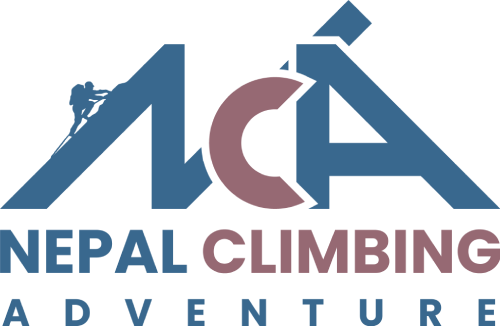
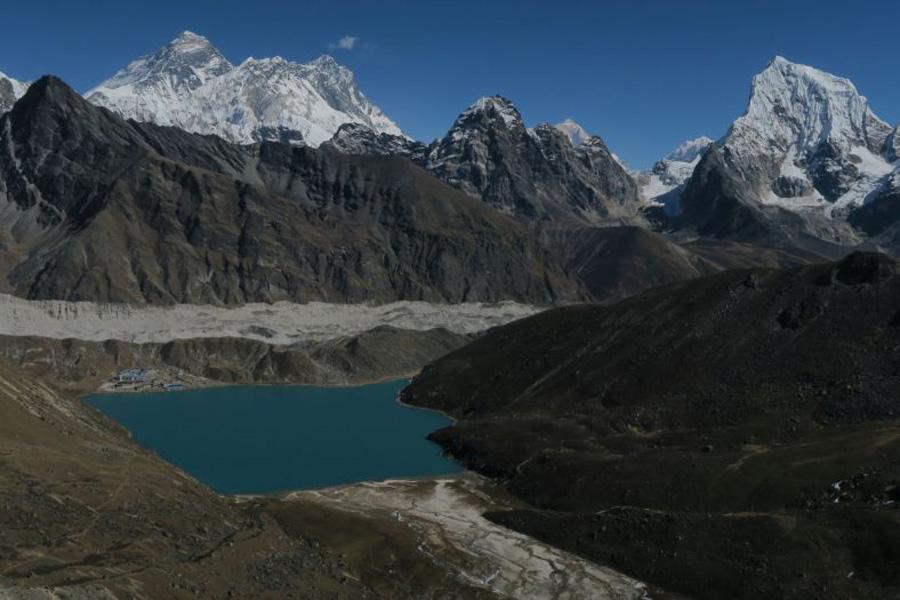
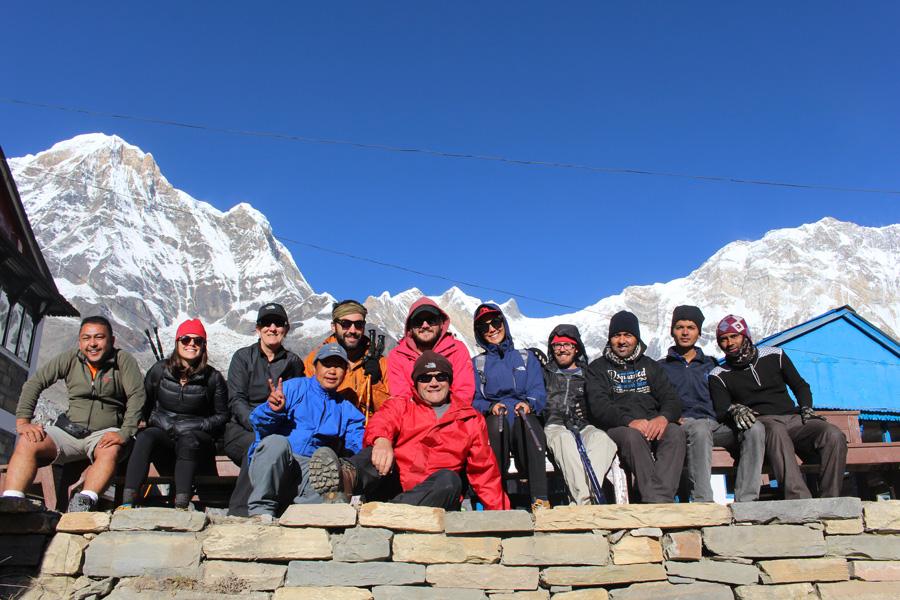
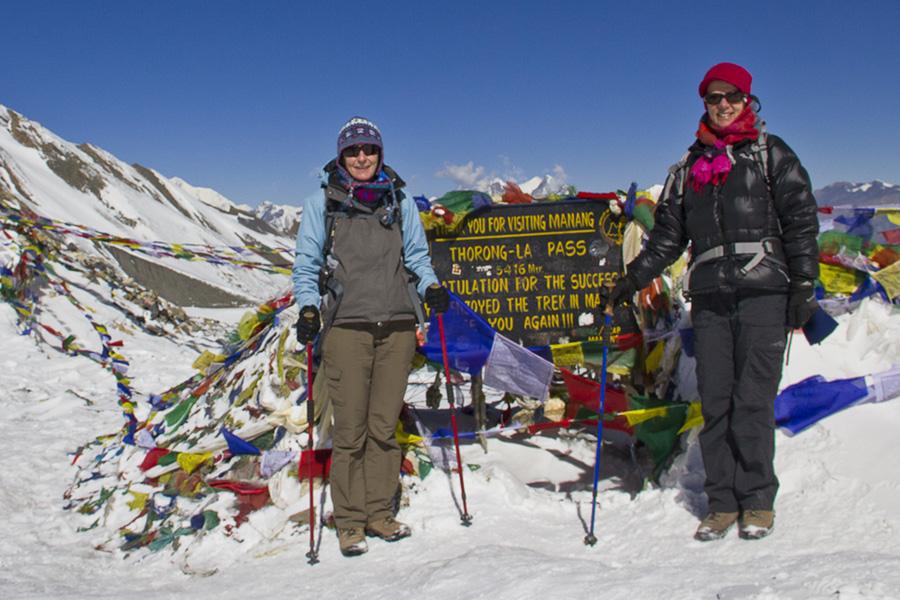
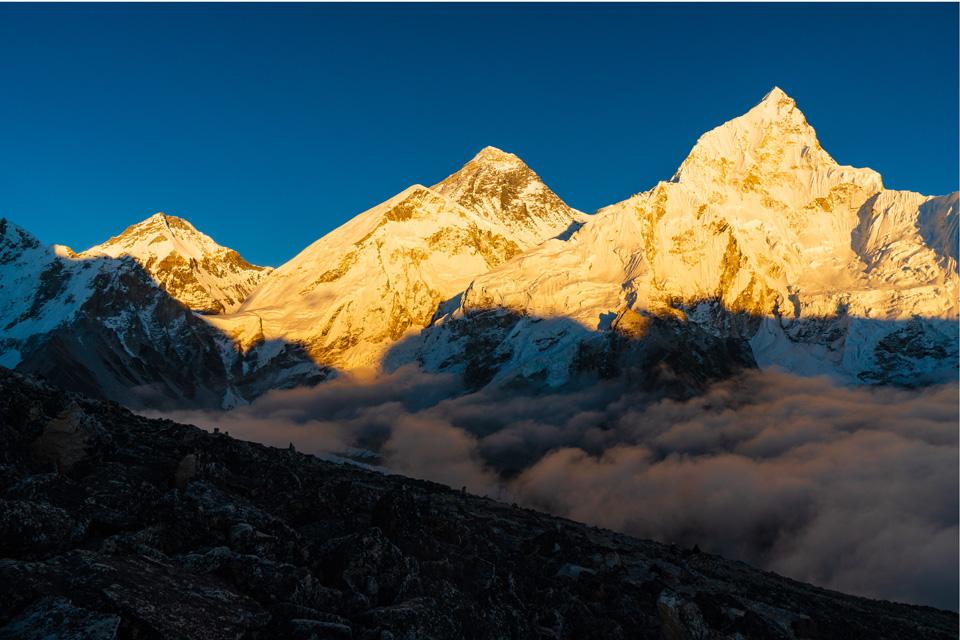
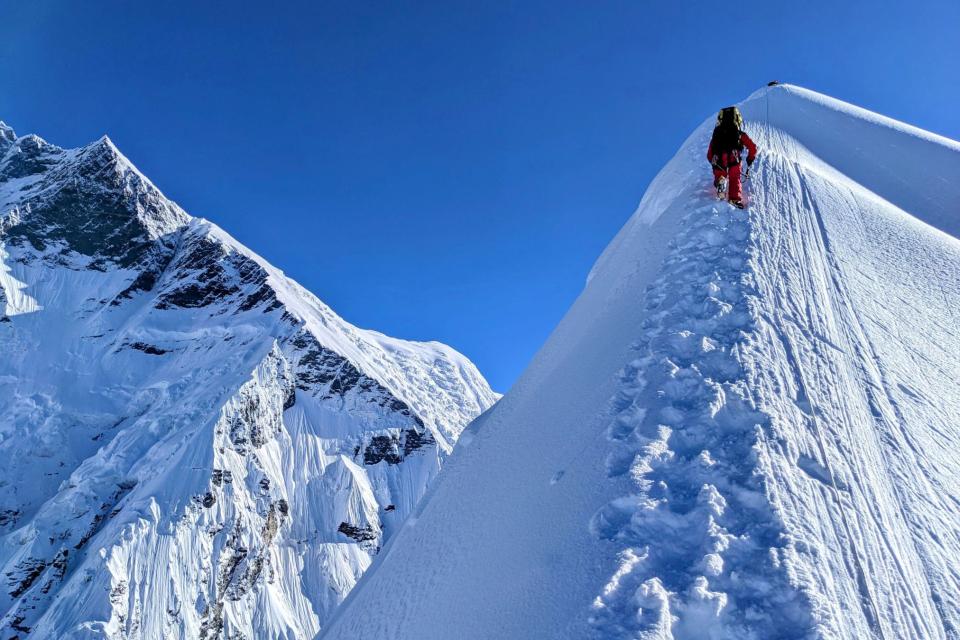
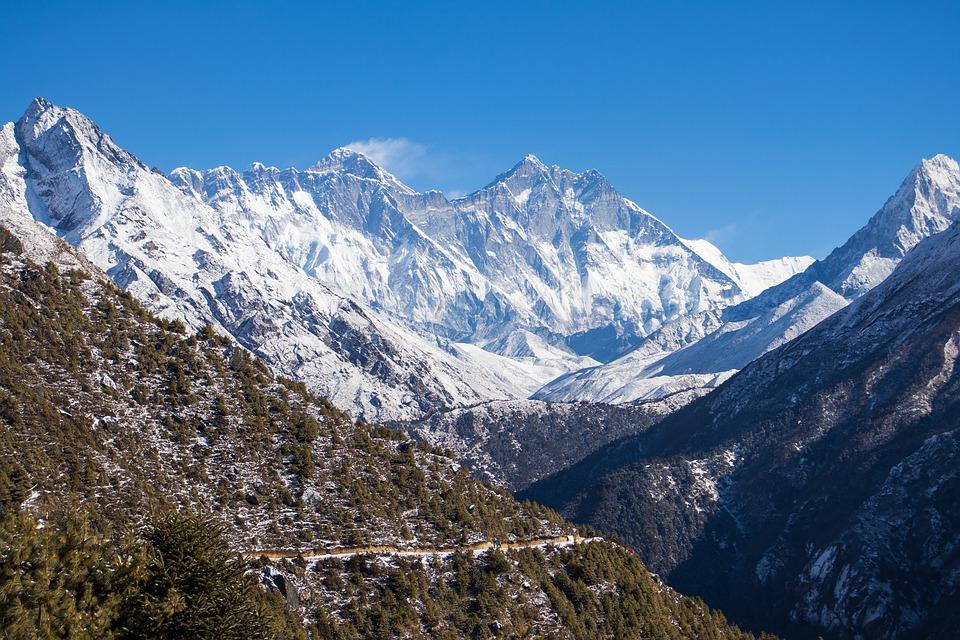
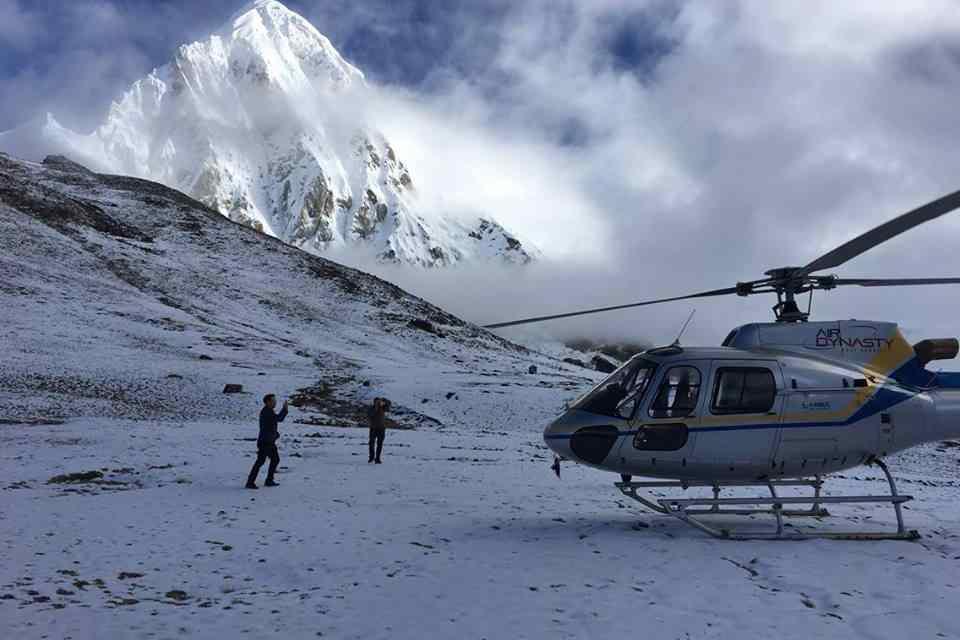
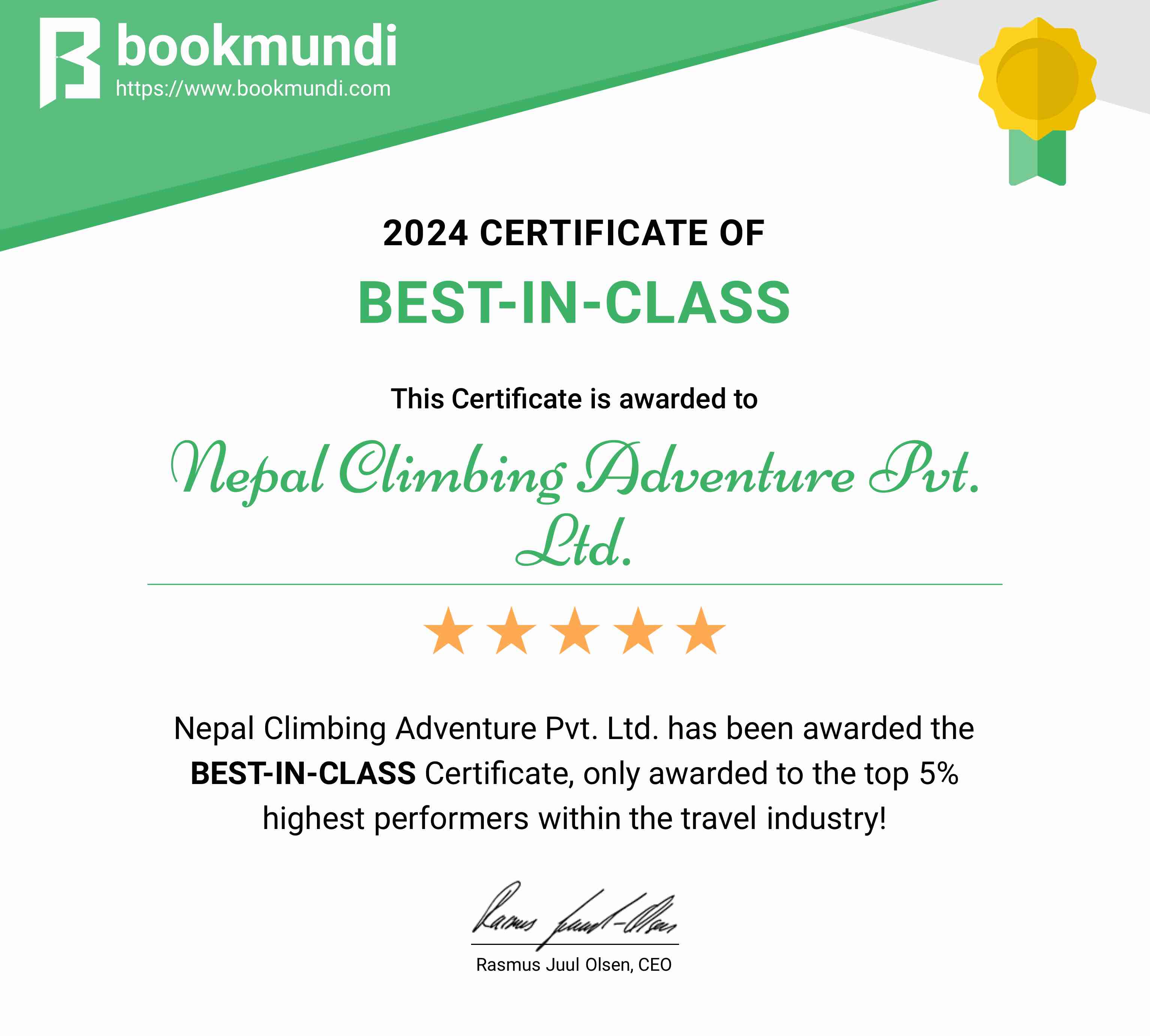
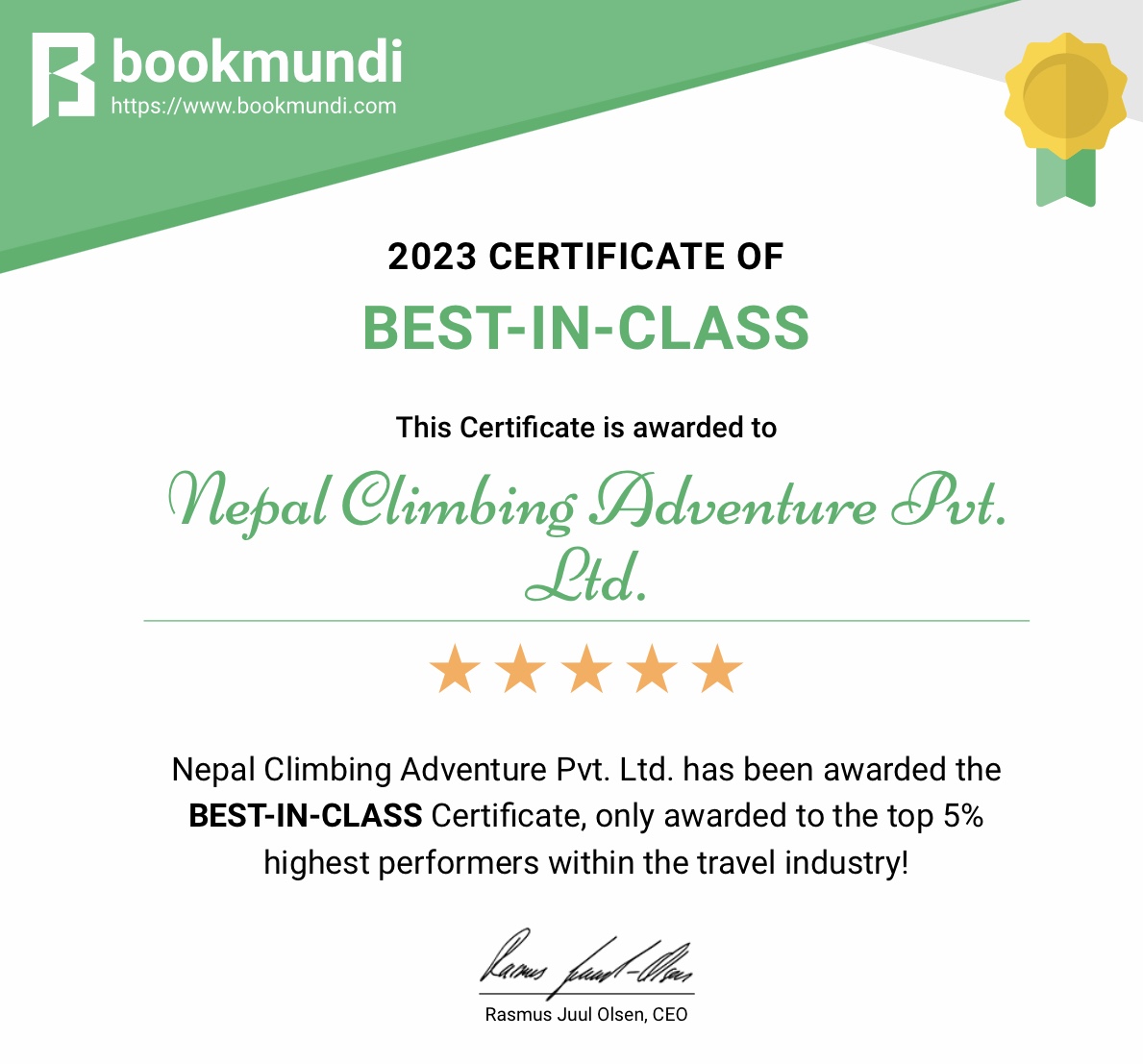
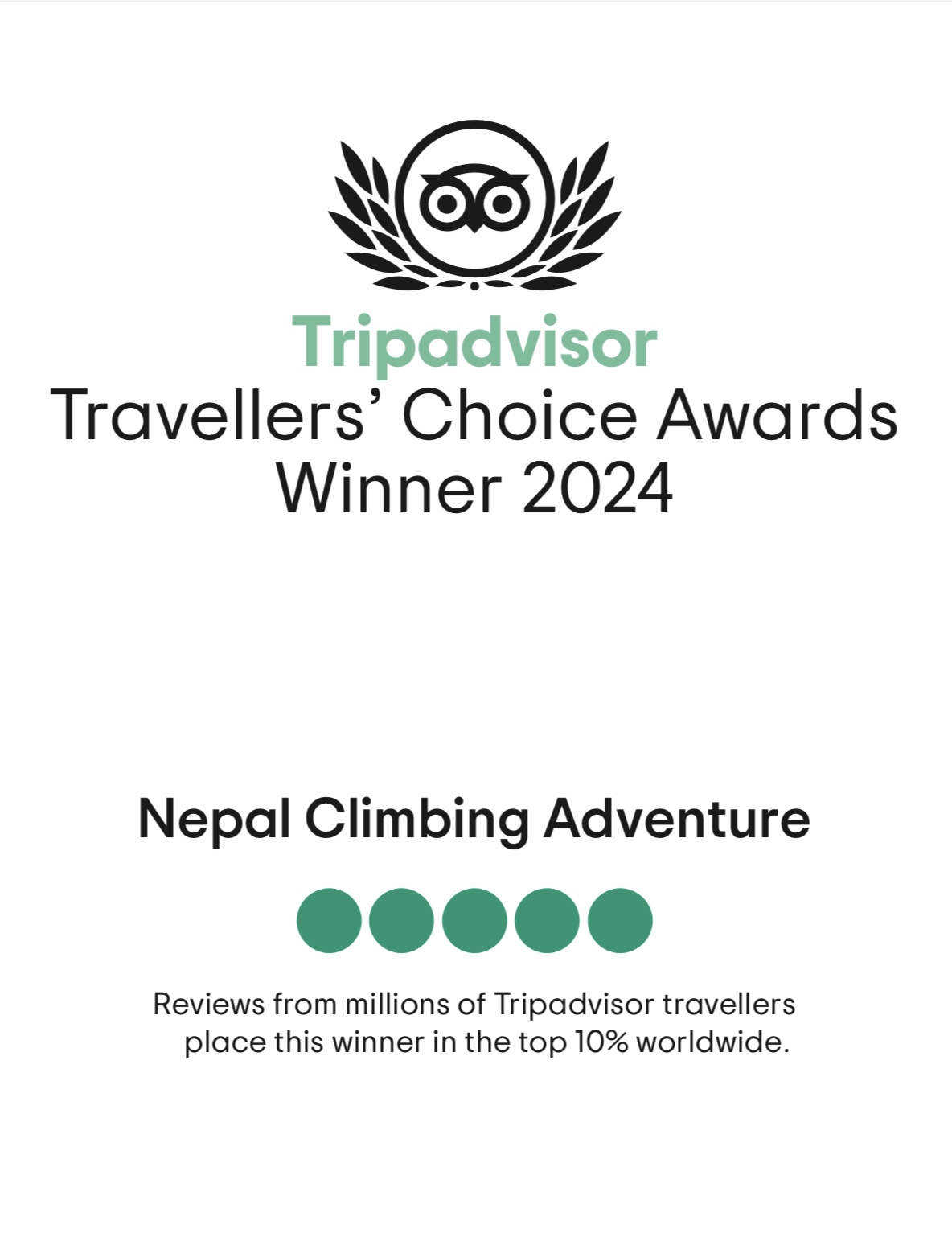
















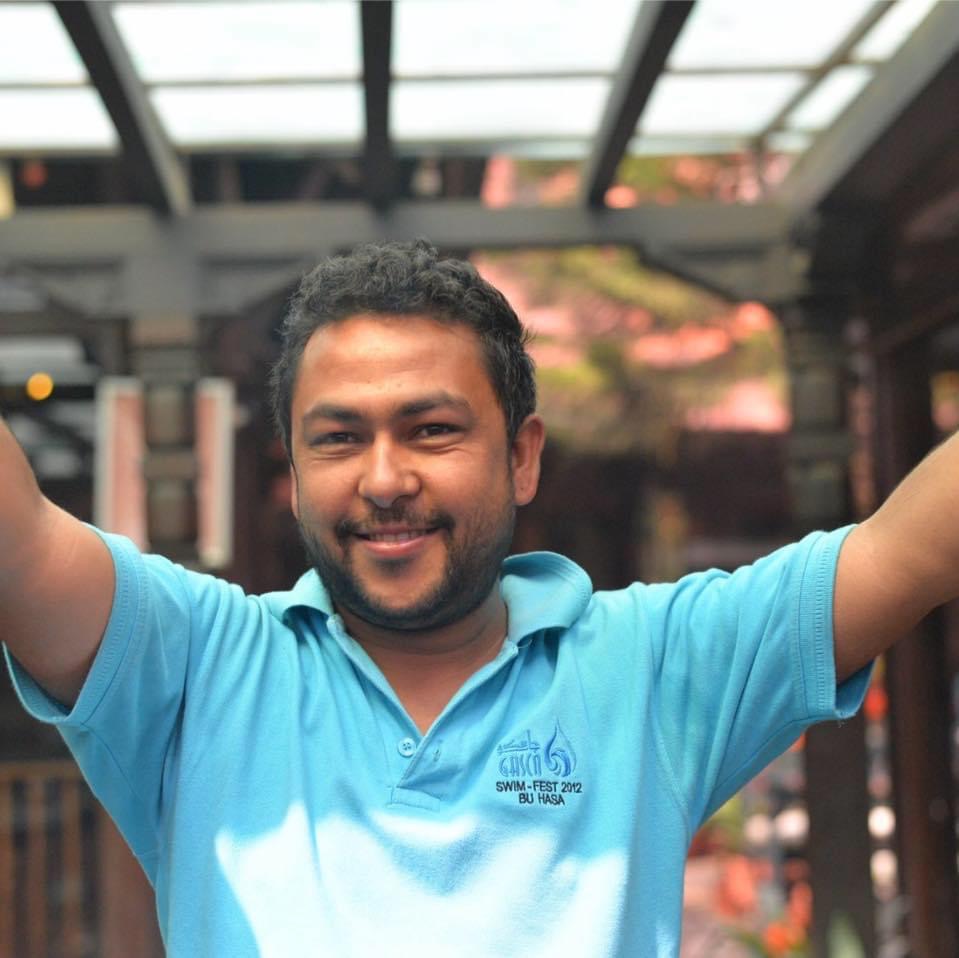 Chris Chhetri
Chris Chhetri